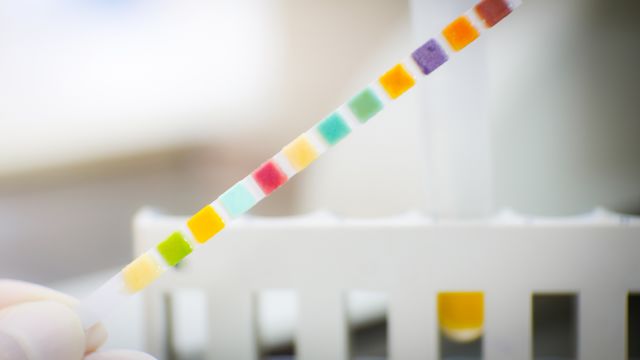The pH scale measures if a substance is acidic, alkaline, or neutral.
- Acidic refers to pH between 0 and 7.
- Neutral refers to a pH of exactly 7.
- Alkaline refers to pH between 7 and 14.
For example, orange juice (which contains citric acid) has a pH between 3.3 and 4.2 (depending on the brand and type).
The term “pH” is an abbreviation for “potential of hydrogen” or “power of hydrogen” (depending on your source and translation). Substances become more acidic or alkaline depending on the concentration of hydrogen ions. A higher concentration of hydrogen ions means more acidity (but a lower pH, which is slightly confusing). And a lower concentration of hydrogen ions means a higher pH. (Apologies if you find yourself thinking about hydrogen ions the next time you sip orange juice).
So what does this have to do with pregnancy prevention?
pH levels in the body
A normal pH balance is important to the health and functioning of the human body. Different parts of the body have different healthy ranges for pH. Saliva has a pH between 6.2 and 7.6. Blood has an average pH close to 7.4. The outermost layer of the skin has a slightly acidic range between 4 and 6, which helps protect the body from harmful pathogens (this layer is called the “acid mantle”).
The vagina is another area of the body where pH level is important. A normal range for pH in the vagina is 3.8 and 4.5 for people of reproductive age (though it is usually higher than 4.5 before puberty and after menopause). This slightly acidic environment helps protect the vagina from bacterial and yeast infections.
pH and pregnancy
Sperm function best in an alkaline environment with a pH between 7.0 and 8.5, and function less well in more acidic environments with a lower pH. During sexual arousal, the body releases lubricants that increase the pH level inside the vagina to be better accommodating to sperm. Also, semen (the fluid that contains sperm) is alkaline, which also alters the pH environment inside the vagina.
A contraceptive that modulates pH
In 2020, a contraceptive that alters pH levels to prevent pregnancy became available. The brand name is Phexxi. It is a gel that is inserted directly into the vagina using an applicator. It can be applied up to an hour before sex—or immediately before. Once inside, it lowers pH to acidic levels that are unfavorable to sperm. A new dose and applicator must be used each time you have sex.
While this contraceptive does not protect against STIs, it can be used with condoms (which do protect against STIs). It cannot be used with a vaginal hormonal ring but can be used with other forms of hormonal birth control.
As with any birth control method, read the instructions carefully! Errors and improper use make any method of birth control less effective. The best way to avoid an unplanned pregnancy is to find a birth control method that works for you and use it correctly and consistently.






